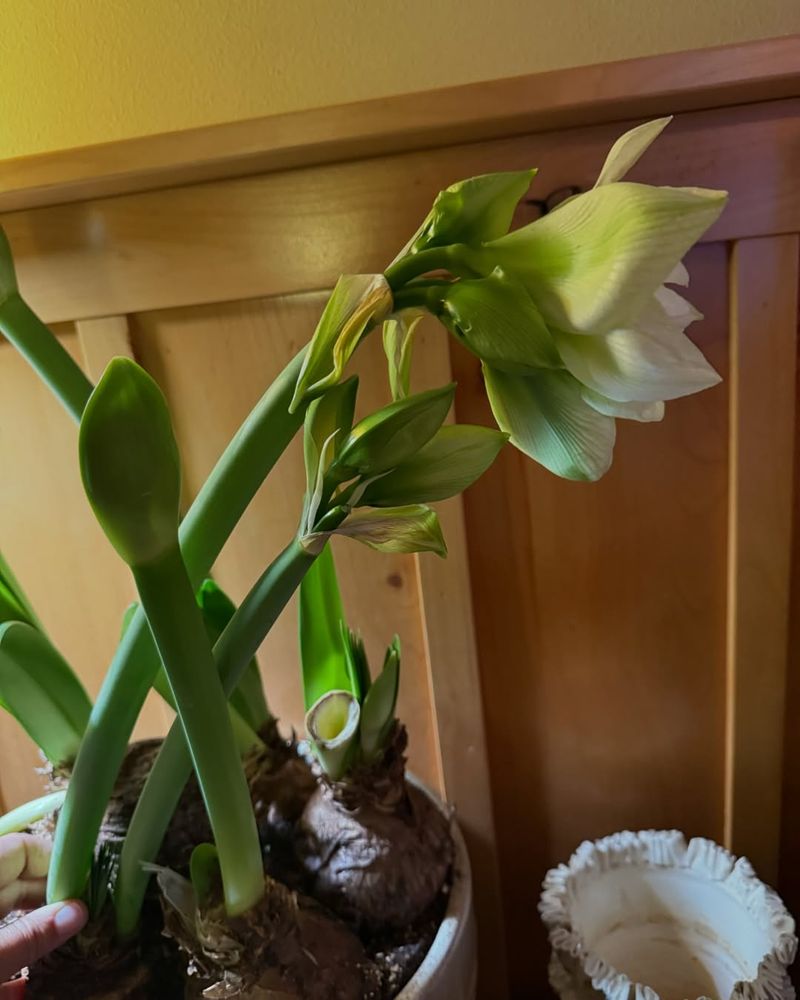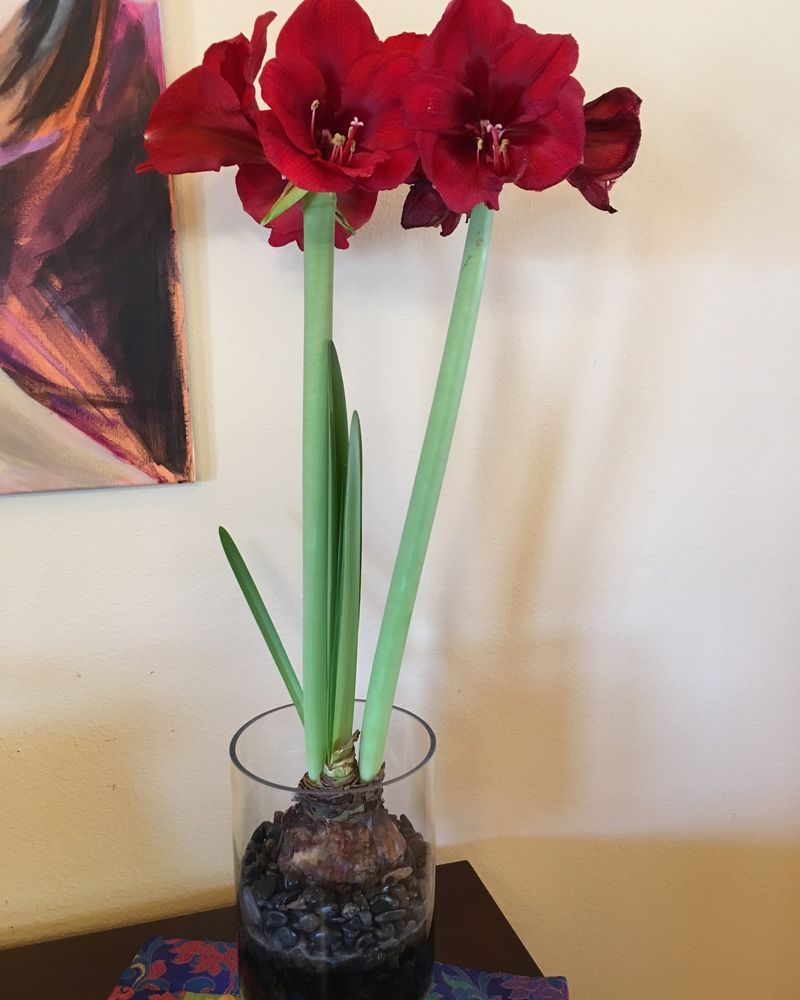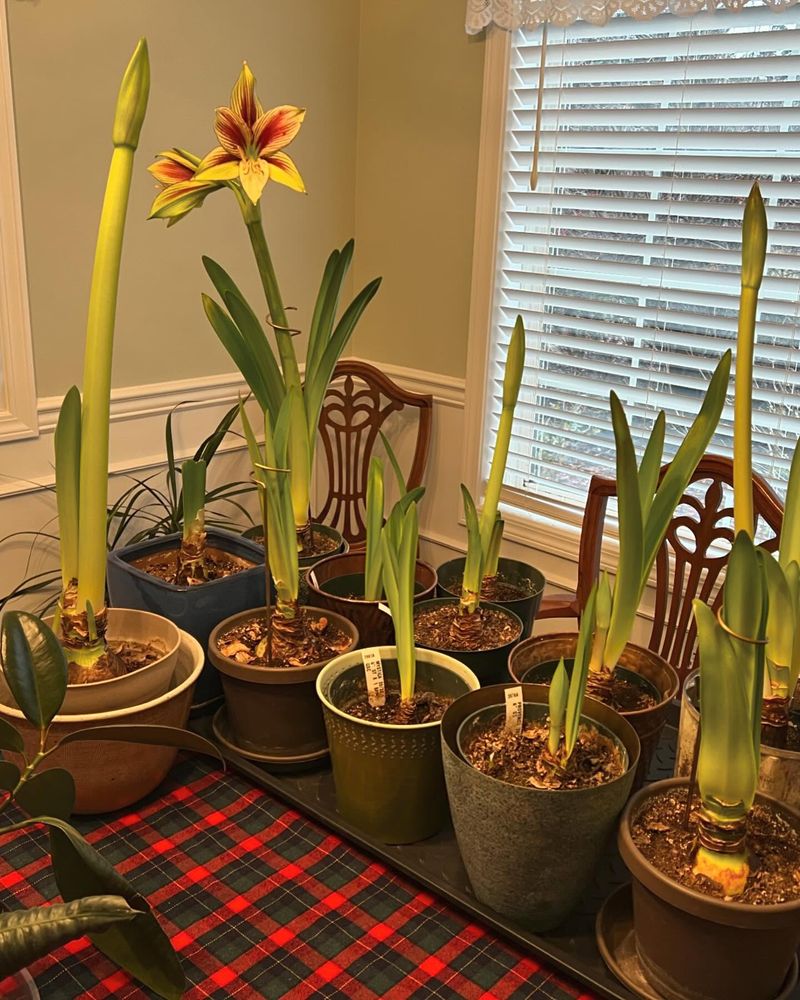When winter settles over Illinois and outdoor gardens go dormant, many gardeners turn their attention indoors to a surprising project: growing amaryllis bulbs.
These tropical beauties become living laboratories on windowsills across the state, offering colorful blooms during the coldest months.
What makes amaryllis so fascinating is how Illinois gardeners approach them with curiosity and careful observation, treating each bulb like an exciting experiment waiting to unfold.
Watching Growth Happen In Real Time
Amaryllis bulbs offer something rare in winter gardening: visible progress you can measure daily. From the moment you plant the bulb, a thick green shoot emerges and climbs upward at speeds that seem almost magical.
Kids and adults alike grab rulers to track how many inches the stalk has grown overnight. Some families even create growth charts on their refrigerators, marking each day’s measurement like tracking a child’s height.
This rapid development turns a simple houseplant into an engaging activity that teaches patience and observation skills throughout the dreary winter months.
Testing Different Light Conditions
Illinois winters bring limited sunlight, making light placement a critical variable in the amaryllis experiment. Gardeners move their bulbs around the house, trying south-facing windows versus east-facing ones to see which produces stronger blooms.
Some even rotate their pots daily to prevent the heavy flower stalk from leaning too far toward the light source. Others compare results between rooms with different temperatures and brightness levels.
Recording these observations helps gardeners understand how environmental factors affect plant development, turning their homes into miniature research stations with colorful, fragrant results.
Experimenting With Watering Schedules
Getting the watering balance right with amaryllis becomes a delicate dance that gardeners approach with scientific precision. Too much water causes root rot, while too little stunts the spectacular bloom everyone anticipates.
Many Illinois gardeners keep journals noting exactly when they water and how much, then observe how the plant responds over the following days. They learn to read the soil moisture with their fingers and watch for signs of thirst in the leaves.
This careful monitoring teaches valuable lessons about plant needs that apply to gardening year-round, making amaryllis the perfect teacher for beginners.
Comparing Bulb Varieties And Colors
With amaryllis available in stunning shades from pure white to deep burgundy, Illinois gardeners often plant multiple varieties simultaneously to conduct colorful comparisons. Each bulb becomes its own experimental subject with unique characteristics to document.
Some varieties produce double blooms while others feature striped petals or picotee edges. Gardeners take notes on which colors bloom first, which stalks grow tallest, and which flowers last longest in their specific home conditions.
This variety testing adds excitement to winter months and helps gardeners decide which bulbs to purchase again next season based on actual performance data.
Forcing Bloom Times For Special Occasions
Timing an amaryllis to bloom for Christmas or a winter birthday becomes a calculated challenge that appeals to the experimental mindset. Gardeners count backward from their target date, determining exactly when to plant based on typical bloom times of six to eight weeks.
Some keep their bulbs in cool storage to delay growth, while others start them early in warmer spots to accelerate development. Temperature manipulation and planting date adjustments turn flower timing into a fascinating puzzle with gorgeous rewards.
Successfully coordinating a bloom for a special celebration feels like winning a science fair, bringing pride and beauty to winter gatherings.
Attempting Rebloom Cycles Year After Year
The ultimate amaryllis experiment involves getting the same bulb to bloom again in following years, which requires understanding the plant’s complete life cycle. After flowers fade, Illinois gardeners must feed the leaves, provide summer growing time, then force dormancy in fall.
Many gardeners document their rebloom attempts with photos and notes, tracking which care methods produce the best second-year results. Some move bulbs outdoors during warm months, while others keep them as houseplants year-round to compare outcomes.
Successfully reblooming an amaryllis feels like earning an advanced degree in plant science, proving that careful attention really does pay off.







